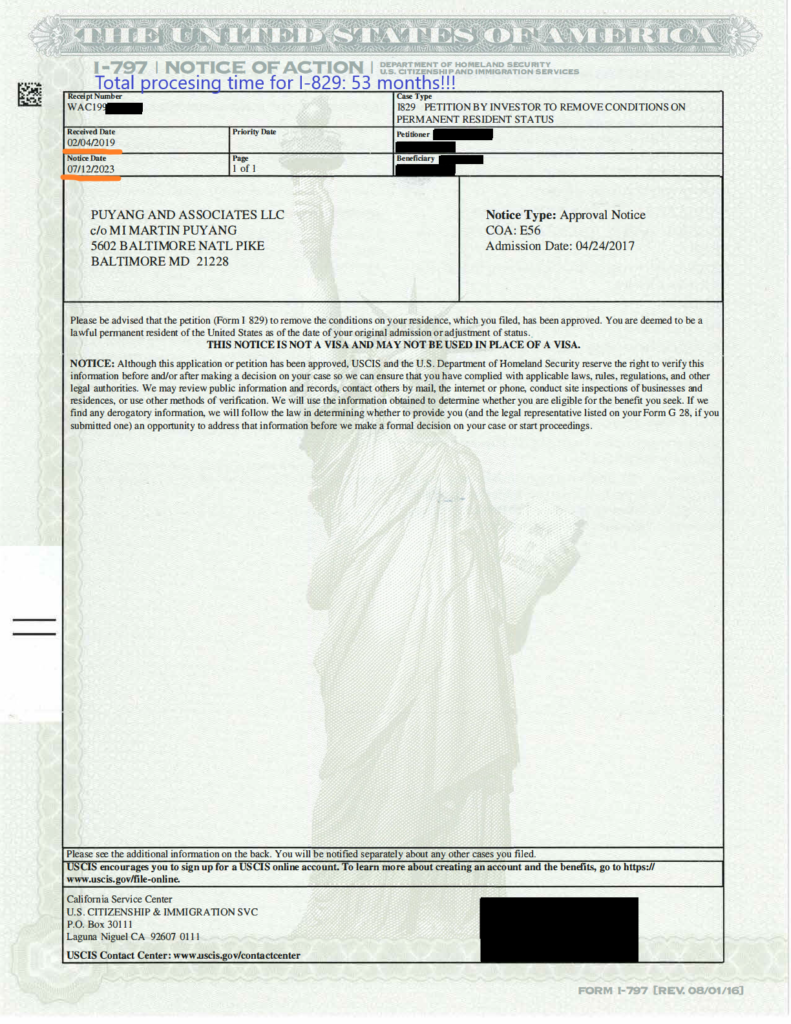The journey towards obtaining a green card via the EB-5 route can often be long and grueling, as evidenced by one of the most recent cases. The applicant in question initially filed their EB-5 I-526 form back on March 14, 2014. After waiting patiently for over three years, they finally received their conditional Green Card on April 24, 2017. The saga didn’t end there, though.
They then had to file an I-829 on February 4, 2019, a form that seeks to remove conditions on their Permanent Resident Status. Fast forward almost four and a half years later, and they’ve finally received approval on their I-829.
Remarkably, this particular applicant, despite enduring an extended waiting period, was the first investor from her project to receive I-829 approval. This underscores not only the length of her journey to achieving unconditional permanent residency, but also the even longer wait times that others are still experiencing within the system
While this narrative might seem like an anomaly, it highlights the realities of current USCIS processing times, especially for EB-5 investors. Fortunately, USCIS has acknowledged these extended processing times and taken steps to ease the situation for conditional permanent residents.
As of January 2023, USCIS has extended the validity of Permanent Resident Cards, also known as Green Cards, for petitioners who properly file Form I-751, Petition to Remove Conditions on Residence, or Form I-829, Petition by Investor to Remove Conditions on Permanent Resident Status (see our related post). This extension is valid for 48 months beyond the card’s expiration date, a significant increase aimed to accommodate the current lengthy processing times for Form I-751 and Form I-829.
In line with this change, USCIS has updated the language on Form I-751 and Form I-829 receipt notices to indicate the new 48-month extension. These updated receipt notices, when presented with an expired Green Card, serve as evidence of continued status while the case remains pending with USCIS. This allows conditional permanent residents to maintain their authorization to work and travel even as they await their case’s resolution.
However, it’s crucial to remember that conditional permanent residents who plan to be outside of the United States for a year or more should apply for a reentry permit by filing Form I-131, Application for Travel Document, before leaving the United States.
The path to obtaining a Green Card can often seem daunting, as evidenced by the applicant’s near decade-long journey. However, the recent changes by USCIS should provide some relief to those currently navigating this path and underscore the agency’s commitment to accommodating its processing times. While the path to permanent residency may be arduous, reaching the end goal is indeed possible.

